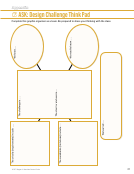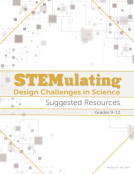Standards Correlations
The following TEKS are ideas for content teachers.
AQUATIC SCIENCE
(10)(A)
The student is expected to classify different aquatic organisms using tools such as
dichotomous keys.
ASTRONOMY
(7)(A)
The student is expected to observe and record data about lunar phases and use that
information to model the Sun, Earth, and Moon system.
BIOLOGY
(6)(F)
The student is expected to predict possible outcomes of various genetic combinations
such as monohybrid crosses, dihybrid crosses, and non-Mendelian inheritance.
CHEMISTRY
(8)(G)
The student is expected to perform stoichiometric calculations, including determination
of mass and gas volume relationships between reactants and products and percent yield.
EARTH AND SPACE SCIENCE
(5)(C)
The student is expected to contrast the characteristics of comets, asteroids, and
meteoroids and their positions in the solar system, including the orbital regions of the
terrestrial planets, the asteroid belt, gas giants, Kuiper Belt, and Oort Cloud.
INTEGRATED PHYSICS AND CHEMISTRY
(6)(D)
The student is expected to relate the placement of an element on the Periodic Table to
its physical and chemical behavior, including bonding and classification.
PHYSICS
(5)(E)
The student is expected to characterize materials as conductors or insulators based on
their electric properties.
TEXAS ESSENTIAL KNOWLEDGE AND SKILLS (TEKS) FOR SCIENCE CONNECTIONS

























































































































































































































































































































